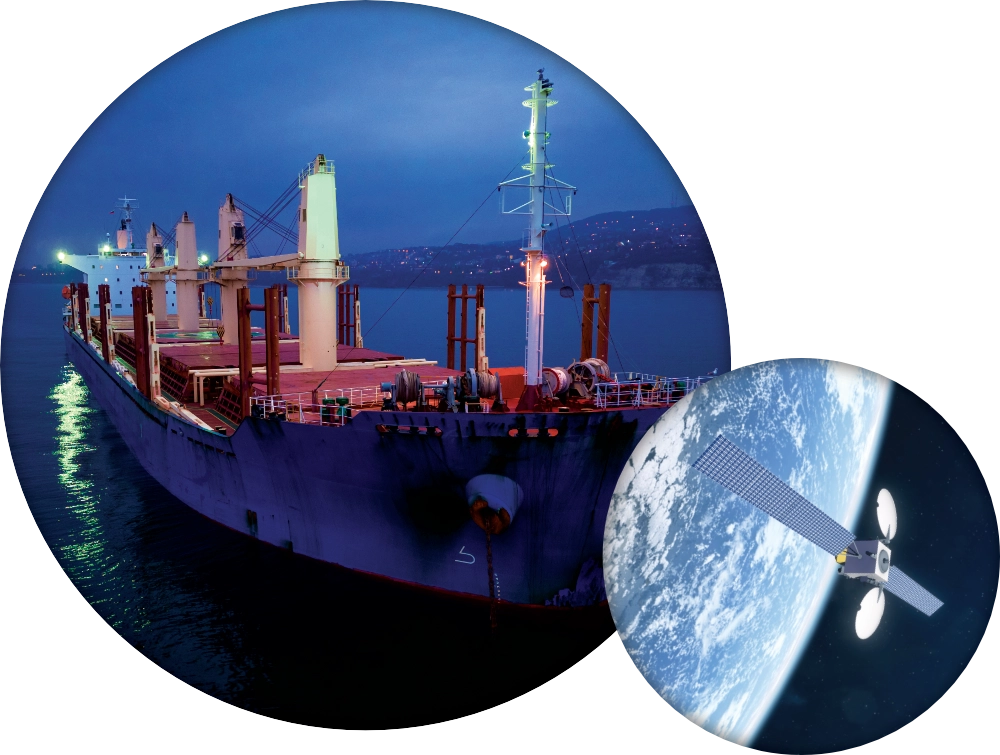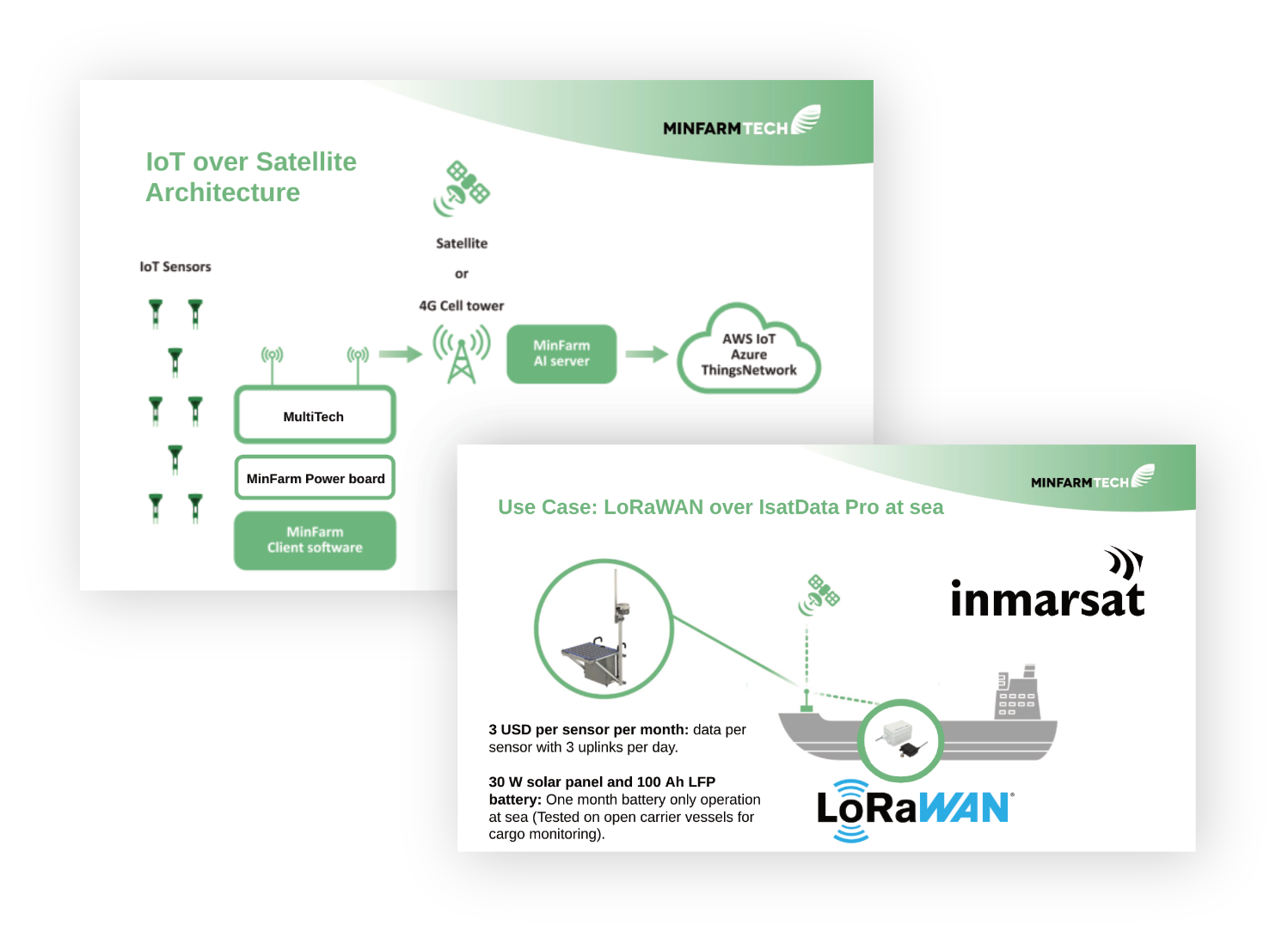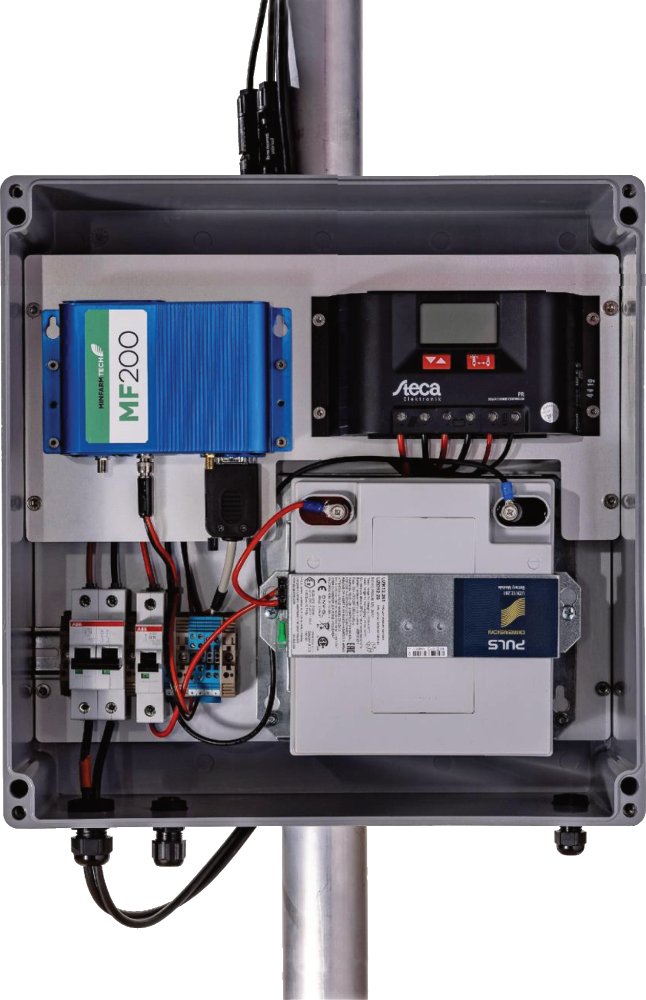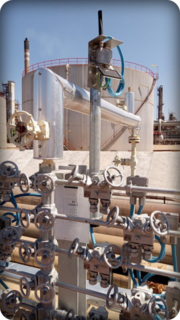Truly Remote Monitoring
Using LoRaWAN and Satellite
Background
 When asked to solve “remote monitoring” problems, the first order of business is to define exactly what “remote” means. Truly remote often means you not only do not have cellular coverage, but you do not have access to power either.
When asked to solve “remote monitoring” problems, the first order of business is to define exactly what “remote” means. Truly remote often means you not only do not have cellular coverage, but you do not have access to power either.
MultiTech solutions partner, MinFarm Tech, has a long history of conquering IoT systems under challenging constraints such as these. They have created innovative solutions to adapt LoRaWAN, combined with Satellite communications over the Inmarsat global satellite service, to solve truly remote monitoring challenges.
Challenge
In this case, they were charged with creating a wireless monitoring system to track environmental conditions in a bulk cargo vessel during its 30-day voyage across the sea so that product quality could be assured and insured. Because this is a temporary system installed on a third-party ship, it could not tap into either the power or communications infrastructure of the ship itself. And because it is installed on board a ship, it must meet unique maritime health and safety requirements which limit the physical size and weight of add-on equipment. LoRaWAN has emerged as the dominant wireless sensing technology for LPWAN and opens the door to a large and growing ecosystem of sensor, gateway and software providers.
LoRaWAN is optimized for very low power and long-range sensing. However, this low power capability is for the sensor nodes themselves. The gateway that aggregates all that sensor data and sends it on to its associated application is typically assumed to have access to power infrastructure as well as a higher bandwidth backhaul connection such as Ethernet or cellular. In this case, MinFarm Tech had identified suitable LoRaWAN sensors that fit their cargo sensing requirements, but the LoRaWAN gateway also needed to be power and data optimized to meet the 30-days at sea requirement without external power and be cost effective utilizing satellite backhaul service from provider Inmarsat.
While LoRaWAN sensors are typically sleepy devices who only wake periodically to take readings and publish their data payloads, a LoRaWAN gateway is typically awake and listening for data all the time. And when it does receive data, it forwards it immediately to the application layer. Neither of those behaviors is acceptable in a use case where the gateway must be battery powered, and where data transmission costs are notably higher than traditional cellular connectivity.

Solution
MinFarm Tech selected the MultiTech gateway due to its programmability and flexible architecture to approach this challenge. With careful study, MinFarm Tech identified the power consumption and time consumption of each gateway function to model what they could accomplish under their fixed power budget, which was limited by the cost of batteries and their solar charging equipment as well as regulatory physical size constraints. System behavior needed to be adapted as well. MinFarm Tech used their own power control logic to physically power down the MultiTech gateway to a zero power state. Then, on a scheduled interval, bring the gateway online in a listen-mode for a long enough window for it to capture data from each of the shipboard sensors. Instead of forwarding that data immediately, MinFarm Tech leveraged the edge intelligence features of the gateway to host a local network server which captured the data locally and created a store-and-forward model of aggregating a days’ worth of data, then using compression algorithms on that data to reduce the amount of power and data costs needed to forward it over the Inmarsat satellite network.

Results
By switching to compressed, store- and forward data models instead of simple packet forwarding, the monthly data cost was reduced by 11 times with no important sensor updates lost. By powering down the gateway and reducing the amount of data transmission time on the air over satellite, system power was reduced by 10 times. For northern-latitude deployments, this reduced the battery and solar system required from a 1200-Watt solar panel and 130 Amp-hour battery to a 130-Watt solar panel and 15 Amp-hour battery, dramatically reducing system size, cost, and weight.
Most LoRaWAN sensors are designed for this type of battery powered sensing application. The sensors stay asleep most of the time, waking periodically, taking measurements then relaying that data over the power efficient, long range LoRaWAN technology. But LoRaWAN gateways are typically not sleepy devices. They are constantly awake and alert, listening for sensor traffic from LoRaWAN sensors to relay that data over a backhaul connection to an IP-based network.
MinFarm Tech turned to MultiTech’s LoRaWAN gateways due to their open architecture, edge intelligence programmability. They knew they could write their own software to run on the gateway that would store any received sensor traffic, aggregate it together and use data compression algorithms to dramatically reduce its payload size.
These customizations were critical for two reasons. MinFarm Tech was previously using a satellite network backhaul where pushing data not only consumed considerable energy, but the data was also more costly than cellular. Satellite communications have been the mature, go-to technology for these types of systems. However, MultiTech and MinFarm Tech are continuously creating new IoT solutions under challenging constraints such as these. This is an example of adapting LoRaWAN, combined with satellite communications, to solve truly remote monitoring challenges.
Ready to learn more about how MultiTech products can take your business to the next level? Contact our team of experts online at MultiTech.com today!
For additional information, contact: sales@multitech.com


